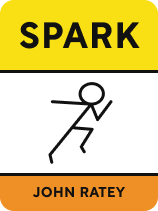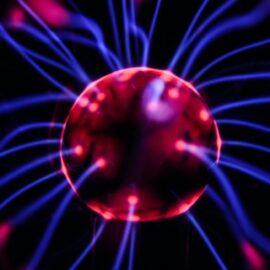

This article is an excerpt from the Shortform book guide to "Spark" by John Ratey. Shortform has the world's best summaries and analyses of books you should be reading.
Like this article? Sign up for a free trial here .
How does exercise benefit the brain? Can physical exercise help with mental health issues?
It’s no secret that exercise is key to staying fit and preventing disease. But when it comes to the brain, exercise is rarely factored in as a preventative measure.
Keep reading to learn about the mental benefits of exercise.
Exercise Balances Neurotransmitters in the Brain
Neurotransmitters are chemicals that regulate the signals passing along the brain’s neural network. When there’s an imbalance of neurotransmitters we can experience difficulties such as anxiety, depression, scattered focus, memory loss, and more. Too much glutamate, for instance, leads to a signal overload that can cause excitotoxic stress. Too little gamma-aminobutyric acid (GABA) undercuts your brain’s ability to stop the signals.
The functioning of these two neurotransmitters is further regulated by three other neurotransmitters you may have heard of: serotonin, norepinephrine, and dopamine. The messages that end up getting transmitted throughout the brain are largely regulated by these three chemicals. There’s overlap between their functions, but:
- Serotonin is largely responsible for signals having to do with mood.
- Norepinephrine influences attention and arousal.
- Dopamine works in the realm of motivation.
These are the three chemicals targeted by most psychiatric medications. Selective serotonin reuptake inhibitors (SSRIs) such as Lexapro, for example, are used to regulate the disruptive mood states associated with depression by increasing serotonin levels in the brain.
Ratey supports the use of such medications and is careful not to suggest that exercise should be relied on to the exclusion of drugs in particular cases. Such decisions are best made under the guidance of physicians familiar with the case. Nevertheless, Ratey argues that exercise helps to bring all these chemicals into balance by stimulating the release of each of these neurotransmitters in optimal amounts for mental health.
| Exercise as Treatment In discussing the mental benefits of exercise, Ratey asserts that exercise can be prescribed as a form of treatment for many psychiatric conditions. This diverges with another approach that has been dominant in the field since the 1980s—prescribing medications. This practice emerged with the idea that common mental disorders were due to chemical imbalances in the brain. It was merely the latest in a series of ideas that prompted treatment strategies: In the era of eugenics (the belief that humans could be improved by selective breeding) poor mental health was seen as a product of genetically inferior brain anatomy—lobotomies (removing parts of the brain) and forced sterilization (to weed out “bad genes” from the human gene pool) were preferred treatments. Later, in the Freudian era, psychologists believed that thoughts and behaviors came from the subconscious mind, and psychoanalysis became the preferred treatment. The more recent pharmaceutical approach to treatment seeks to restore chemical balance in the brain, but even that approach has proven to be an incomplete treatment for most mental health issues. Some experts are even convinced that the rise of psychiatric medications has contributed to the prevalence of mental health illness today. They cite evidence indicating that the use of psychiatric drugs leads to chronic psychiatric disorders with more severe symptoms for many patients. Using exercise as a treatment in the way Ratey describes seems to have none of these adverse effects, and, increasingly other clinicians also advocate using it this way. |
Anxiety
Anxiety is a component of your brain’s stress-response system; it’s a natural response to legitimate threats. When it becomes overly heightened, turning into an undue fear response to misperceived threats, it becomes a disorder. According to Ratey, exercise alleviates both the symptoms and the state of anxiety by calming our bodies, increasing our sense of autonomy, and retraining our brains to better regulate and reduce fear signals.
| Exercise Improves Anxiety Complications of Covid-19 Research has shown that the Covid-19 virus causes physiological changes in the brain that induce anxiety. A recent study has found that physical exercise directly counters this anxiety, and in an unexplained way—it replicates some of the mechanisms by which the virus heightens anxiety, but in doing so, it lowers anxiety. The virus increases anxiety by attaching itself to a particular enzyme, causing that enzyme to be released in greater amounts. This leads to inflammation, the death of neurons, and heightened anxiety signals in the brains of those infected. Exercise also causes this enzyme to be released, but the result is the opposite of the virus’s—a general improvement in mental health and less anxiety. The exact reason the outcome is so different when exercise increases this enzyme as opposed to when the virus increases it hasn’t been definitively determined. Regardless, it demonstrates another biological link between exercise and the control of anxiety. |
Depression
Ratey argues that depression should be thought of as a breakdown in neural communication. In the depressed brain, the neural network breaks down, disconnecting brain regions from one another. This causes critical parts of the brain to atrophy. A lack of neurotransmitters compounds this state leaving the brain unable to kickstart its attention and motivation tools. The effects of exercise can break this vicious circle by rebuilding neural connections, restoring healthy brain chemistry, powering neurogenesis, and nurturing a sense of hope.
| The Current View of Depression Ratey’s view of depression as a breakdown in neural communication fits with the current consensus about the condition. However, psychologists haven’t always seen depression this way. It was once thought that depression was primarily caused by a lack of neurotransmitters like serotonin and dopamine. This is part of the picture, but the current understanding is broader: It’s now understood that stress hormones degrade the neural network and atrophy the amygdala and prefrontal cortex in the depressed brain. These parts of the brain are responsible for threat detection and cognitive control, respectively. The result is that the depressed brain has a diminished capacity to respond, make choices, and learn, among other things. |
Addiction
Addiction co-opts our attention resources by making the brain focus exclusively on the object of addiction. For the drug addict, for instance, an overload of dopamine in the brain—triggered by the drug of choice—tricks the brain into attending only to that trigger as if it’s a matter of life or death. Exercise breaks this fixation by retraining the brain’s motivation system—weaning it off an unnatural dopamine fix in favor of a balance of healthy neurochemicals.
(Shortform note: Substance abuse and addiction are common markers of trauma. Bessel van der Kolk discusses the unique nature of traumatic memories in The Body Keeps the Score. Such memories alter the makeup of the brain itself and often leave the victim feeling fearful and powerless. A key aspect of Ratey’s insights on exercise and addiction is that exercise can give us a sense of accomplishment that helps to overcome this powerless feeling.)
ADHD
Ratey argues that people with ADHD have functional but poorly regulated attention systems in the brain. This is caused by low levels of dopamine and norepinephrine in the ADHD brain, which undermine its ability to prioritize among distractions, sustain motivation, and combat impulses. Exercise causes brain cells to secrete these key neurotransmitters, builds coordination between the brain’s attention resources, and conditions the systems that support continued attention regulation. In particular, exercises requiring some structure, risk, or coordination (for example, martial arts) seem to be especially effective in harnessing the attention resources of the ADHD brain.
| Ratey’s View of ADHD Ratey has done a lot of work in the field of ADHD, and his 1994 book, Driven to Distraction, co-authored with Edward Hallowell, is often touted as a valuable resource for those dealing with ADHD. Their approach sought to overturn misconceptions about the condition, such as the notion that it only occurred in children or that it was a consequence of laziness or too much sugar. Hallowell and Ratey instead saw ADHD in neurological terms and offered insights into how adults and children with ADHD might manage their distractibility and lean into the strengths of their brain function. His advice here on exercise and ADHD is informed by this history. |

———End of Preview———
Like what you just read? Read the rest of the world's best book summary and analysis of John Ratey's "Spark" at Shortform .
Here's what you'll find in our full Spark summary :
- How exercising can help with addiction, anxiety, and depression
- A look at how exercise optimizes brain function and supports mental health
- What exercises are the most beneficial, and how to stick to a routine






